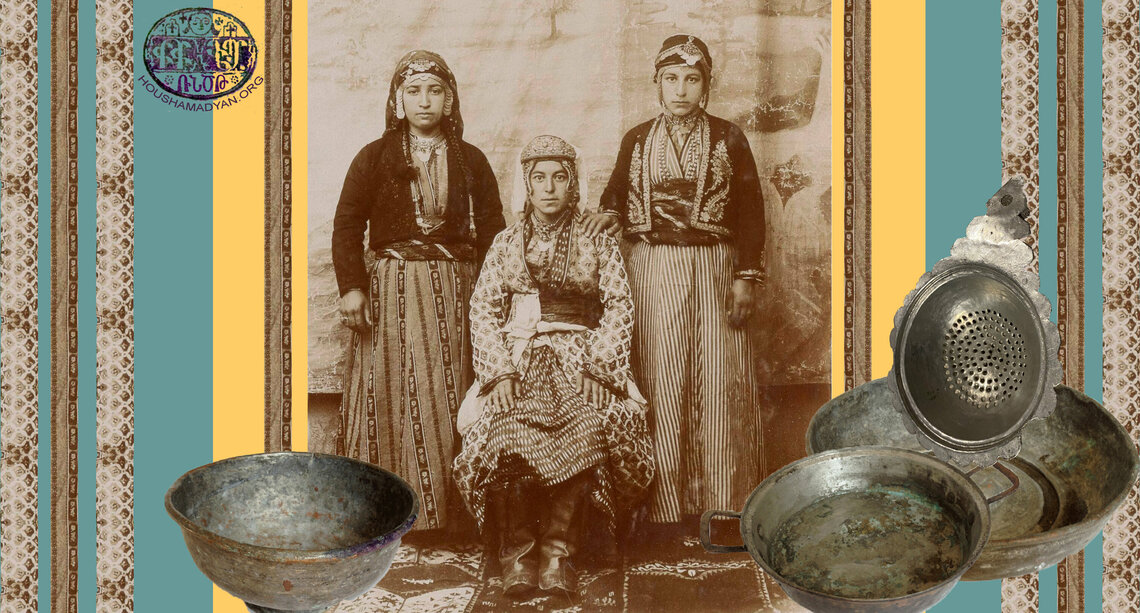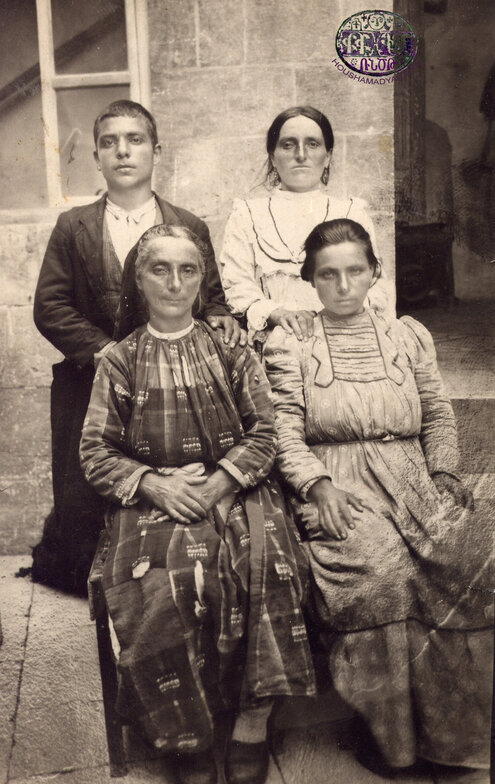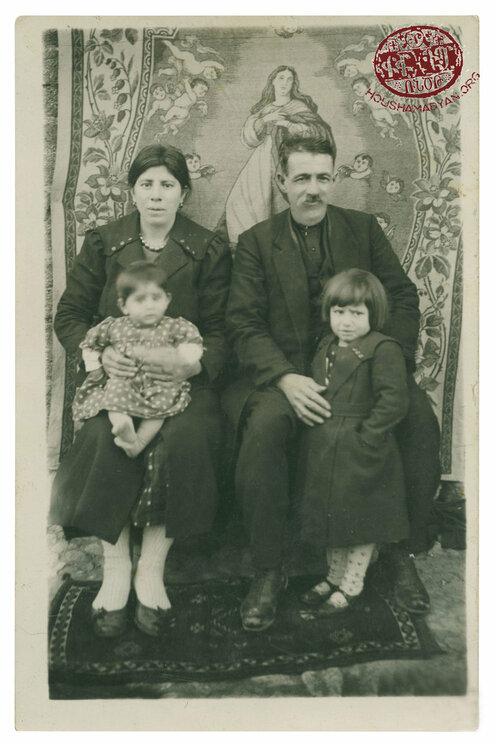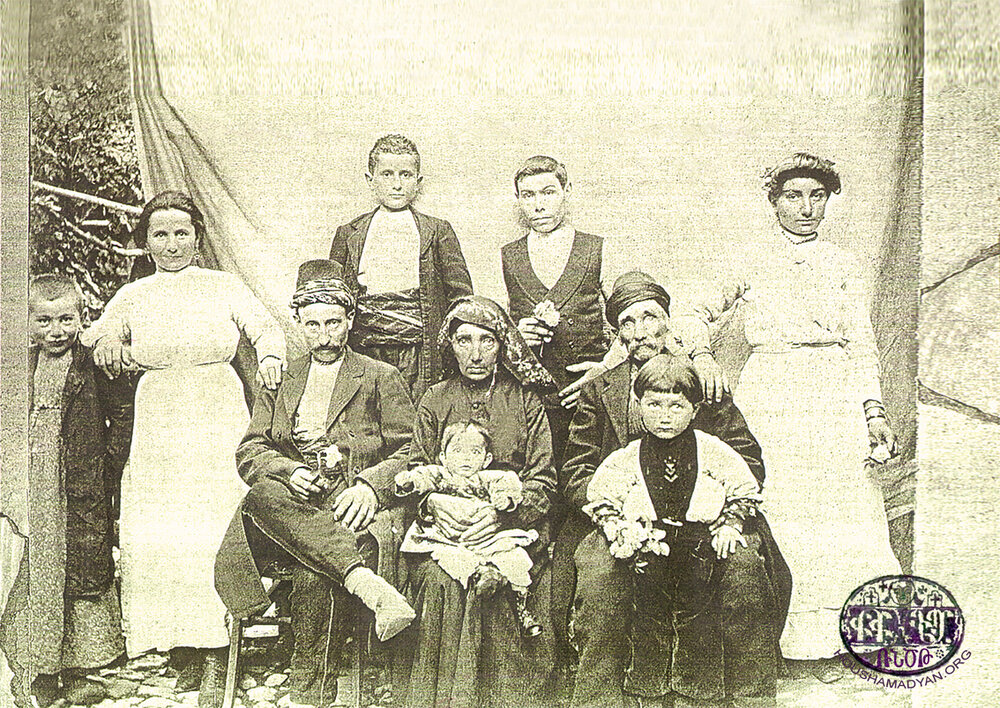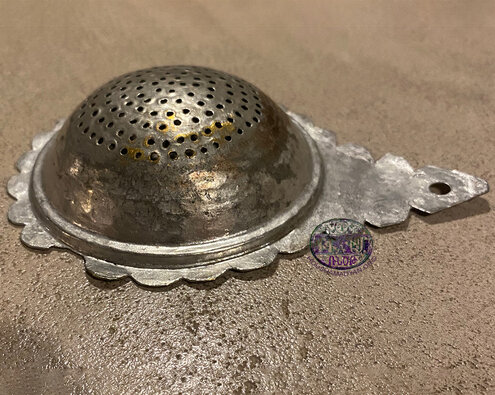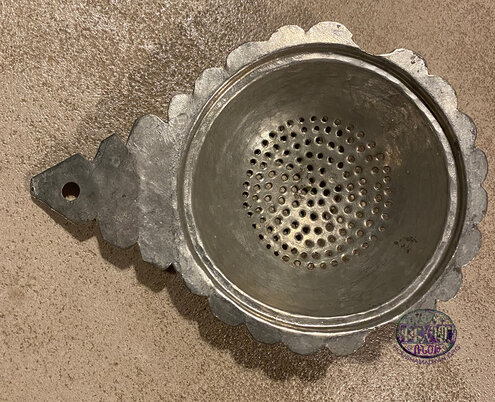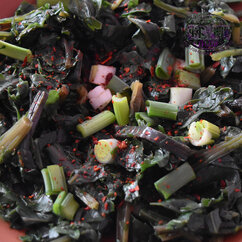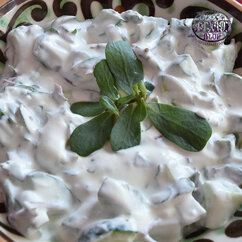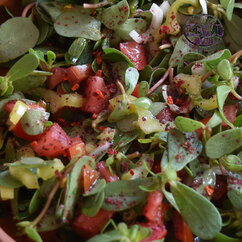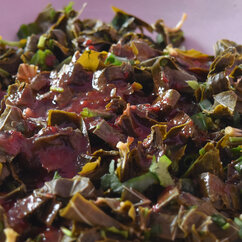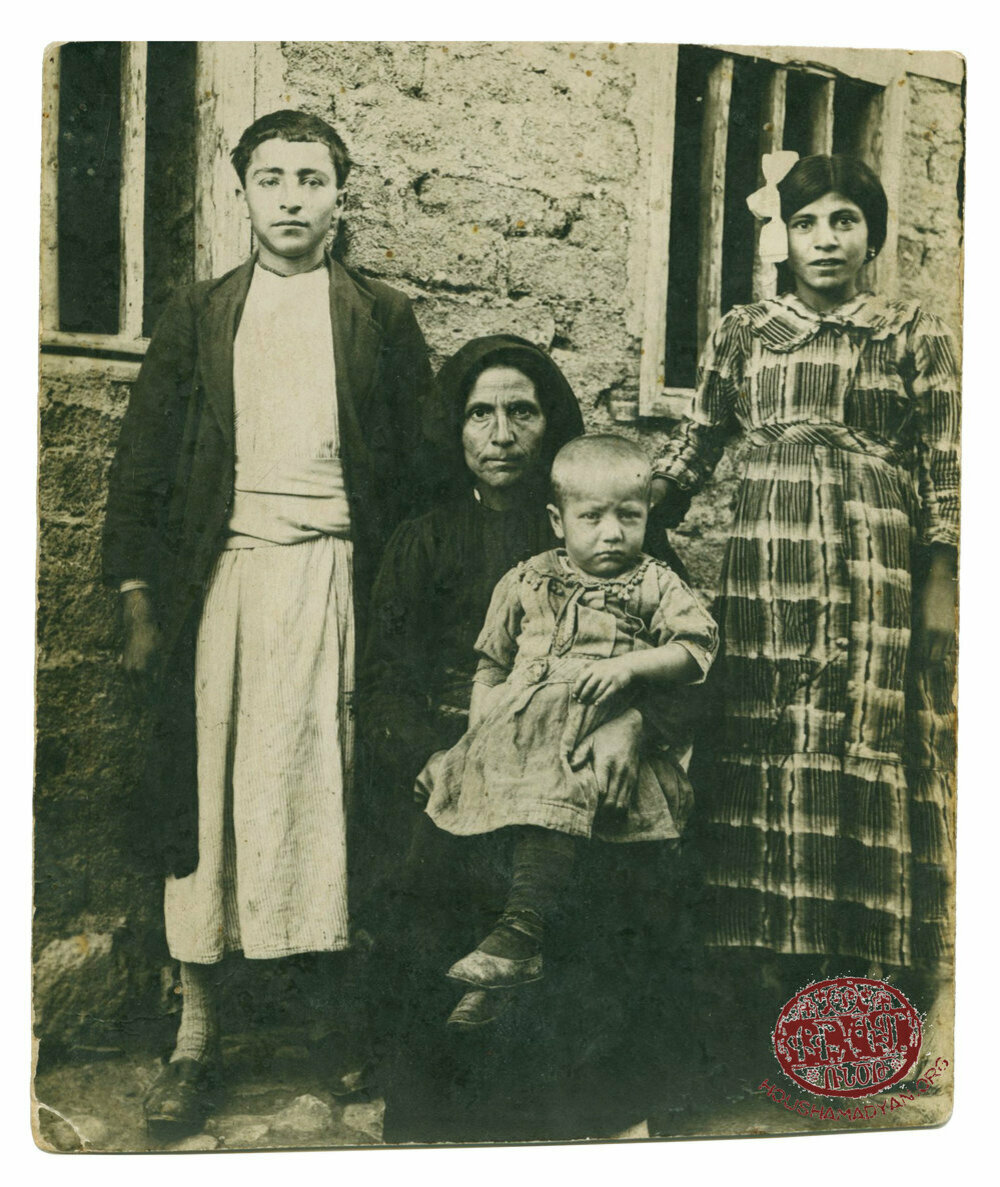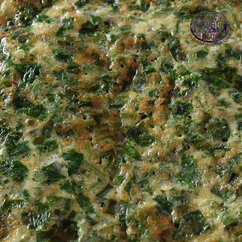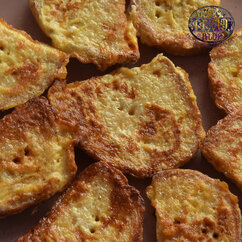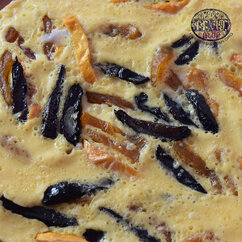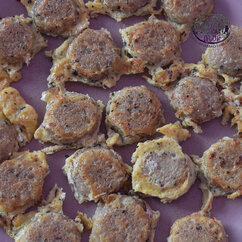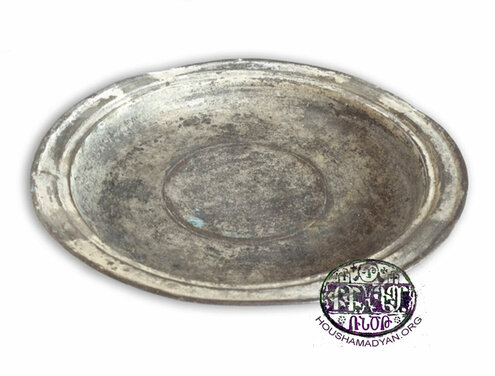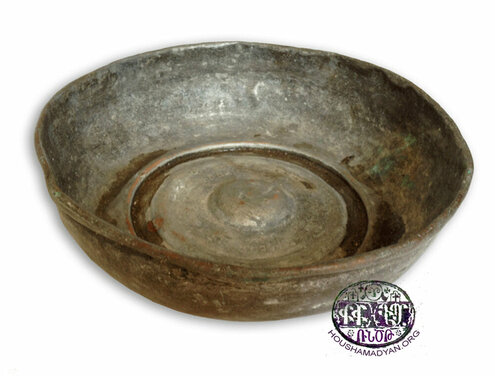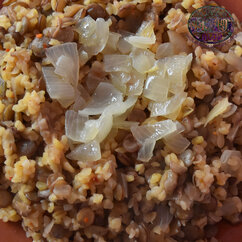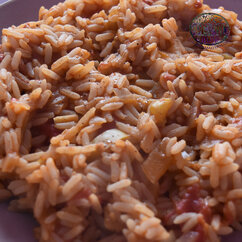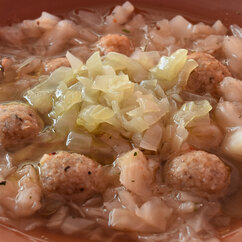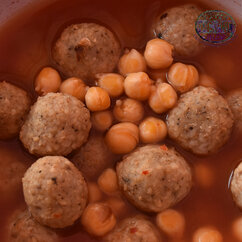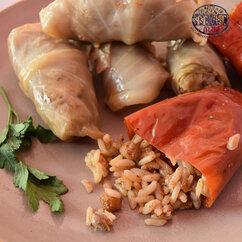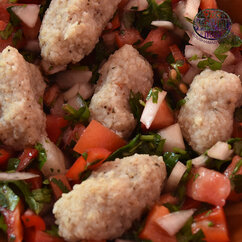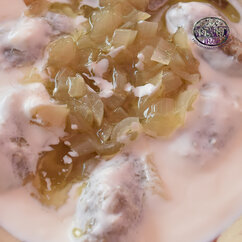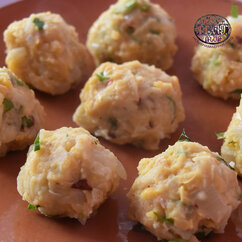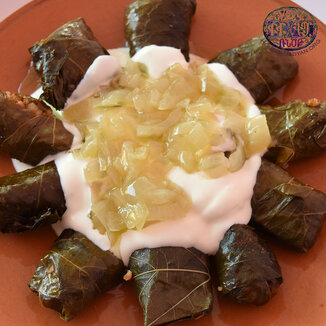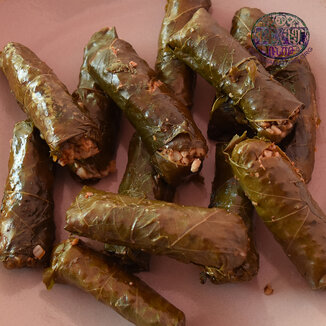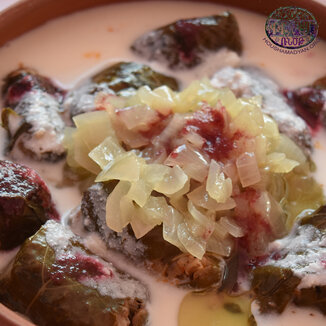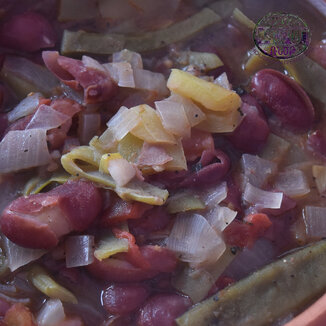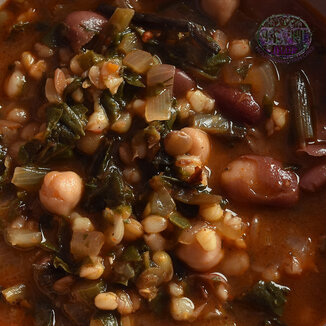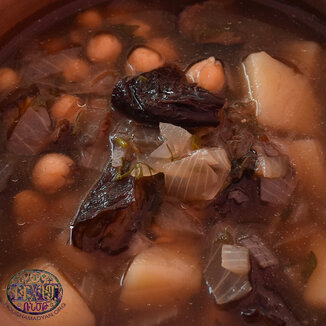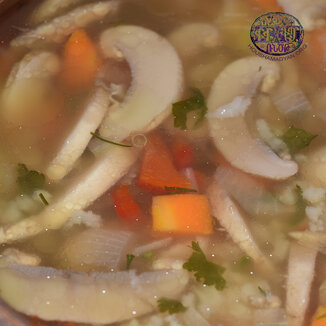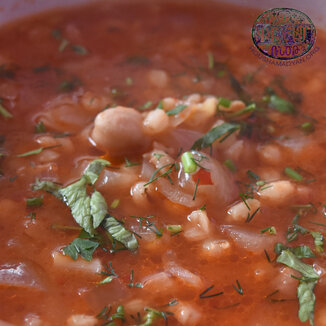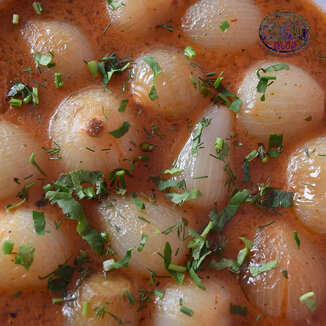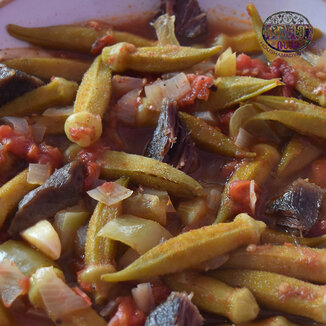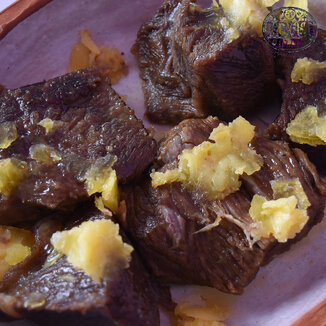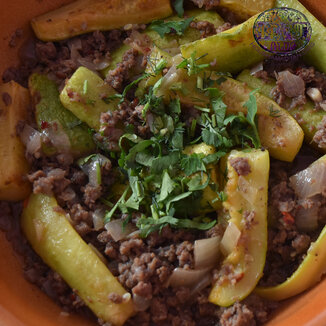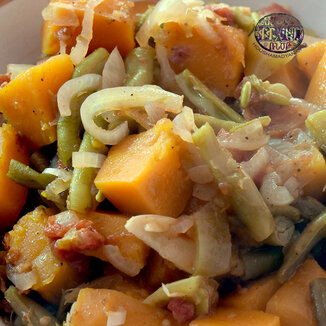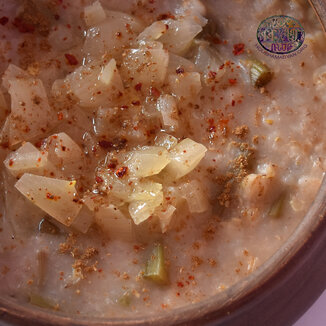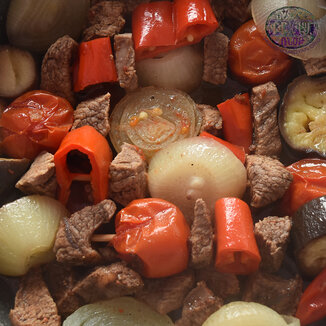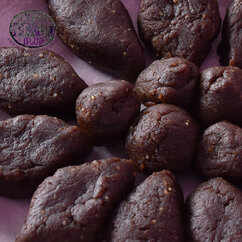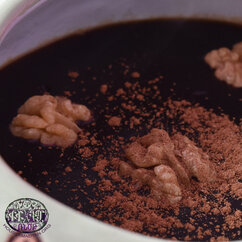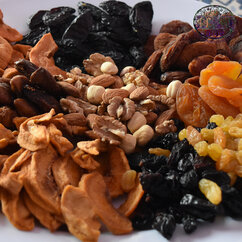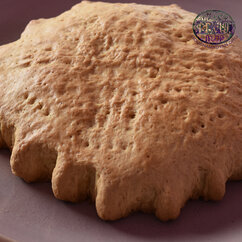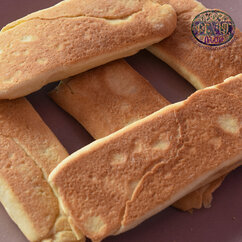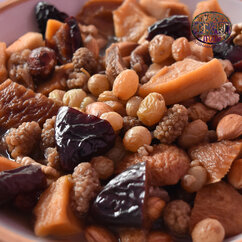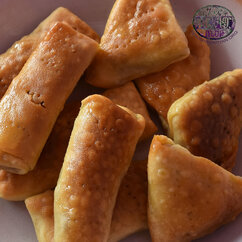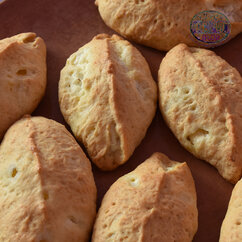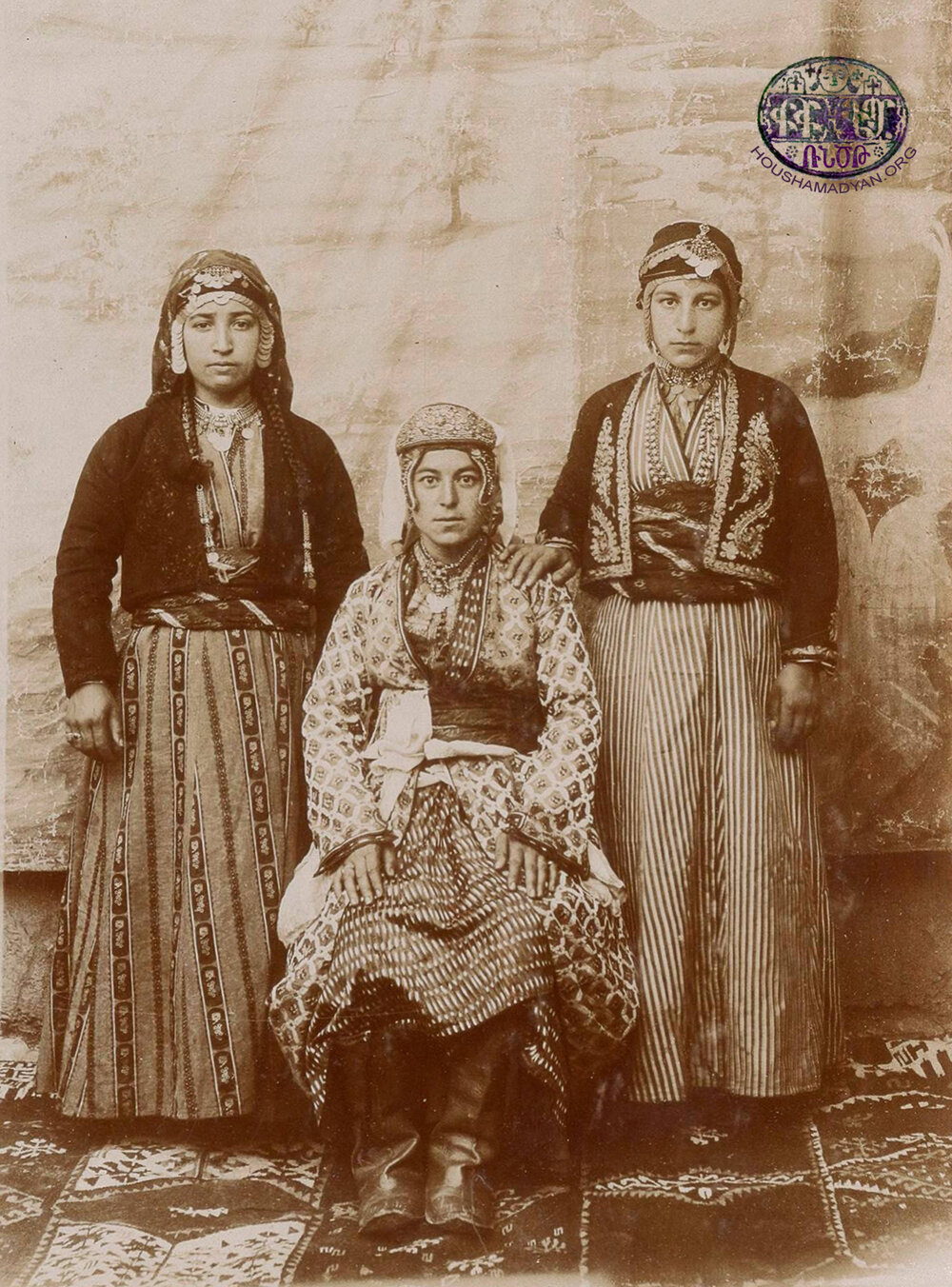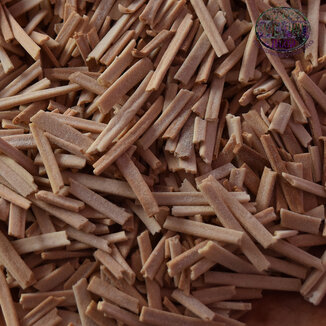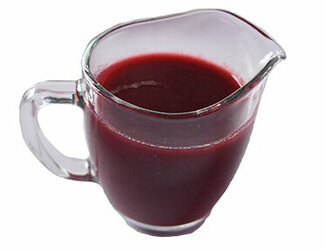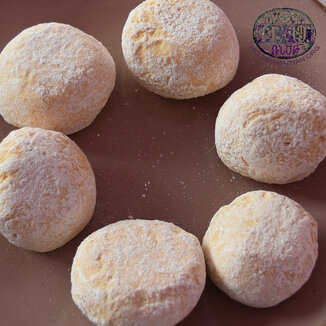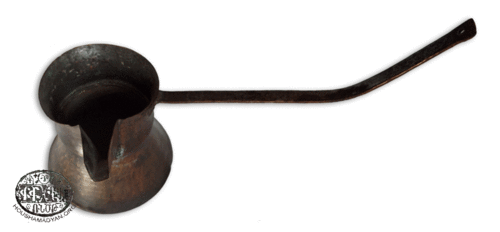Malatya – Cuisine
Author: Sonia Tashjian, 08/03/21 (Last modified 08/03/21) - Translator: Simon Beugekian
The historical district of Malatya, with the eponymous city at its heart, was part of the province of Harput. Kevork Melidinetsi described it as a large “… area that was blessed with fertile soil, plentiful springs and supplies of water, and thick and leafy mountain woodlands. It was surrounded on three sides by impregnable mountains and on the fourth side by water” (Arshag Alboyadjian, Badmoutyun Malatyo Hayots, page 3). The many streams and rivers that originated in the mountains flowed into the city, providing the population with water. The city’s piping system ensured that each courtyard had access to running water, although almost all homes had their own wells. These streams also powered the city’s watermills and irrigated its fields. The riverbanks were wonderful destinations for those seeking leisure, especially the banks of the Baboukhd River.
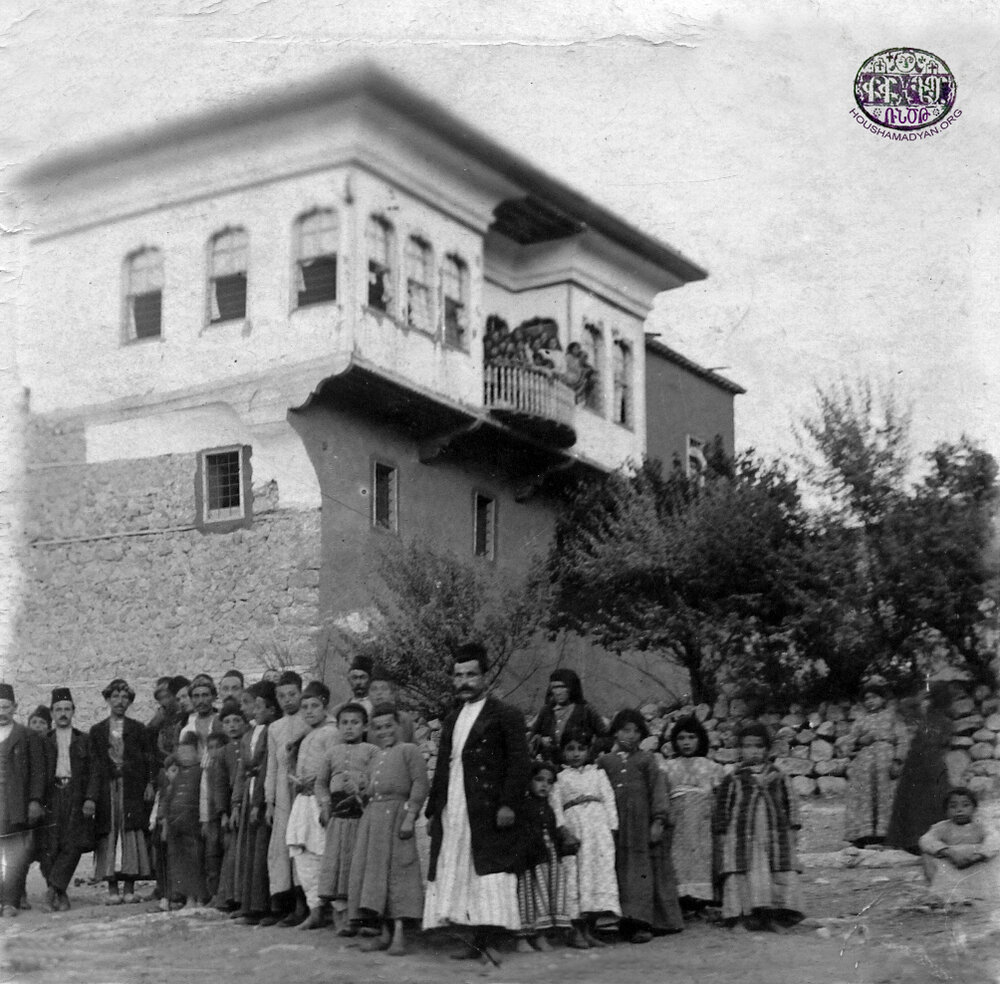
Malatya’s temperate climate, abundance of water, and fertile soil resulted in a rich variety of local flora and in abundant agricultural production. The forest supplied the locals with wood to burn, feed for their animals, wild fruits, nuts (walnuts, hazelnuts, and almonds), wild berries, herbs, mushrooms, tree sap, spices, etc. The large pastures of the area created favorable conditions for animal husbandry, and therefore dairy and milk were in plentiful supply. Fishing was also a developed industry. Various fruit trees were grown in the locals’ orchards, including apricot, prune, peach, pear, apple, quince, mulberry, fig, cherry, watermelon, and cantaloupe. Among the vegetables that they grew were eggplant, pumpkin, tomato, pepper, cucumber, kouta (khuta) (Armenian cucumber), cabbage, potato, prchekli (carrot), dag (beet), radish, onion, and garlic. Among the herbs that they grew were mint, horsemint, basil, parsley, celery, spinach, lettuce, etc. As for grains and cereals, the people of Malatya grew wheat, barley, rice, chickpeas, beans, lentils, corn, and peas. Grapes were an especially important part of the local diet. The area produced large quantities of grapes, of various types and of exceptional quality.
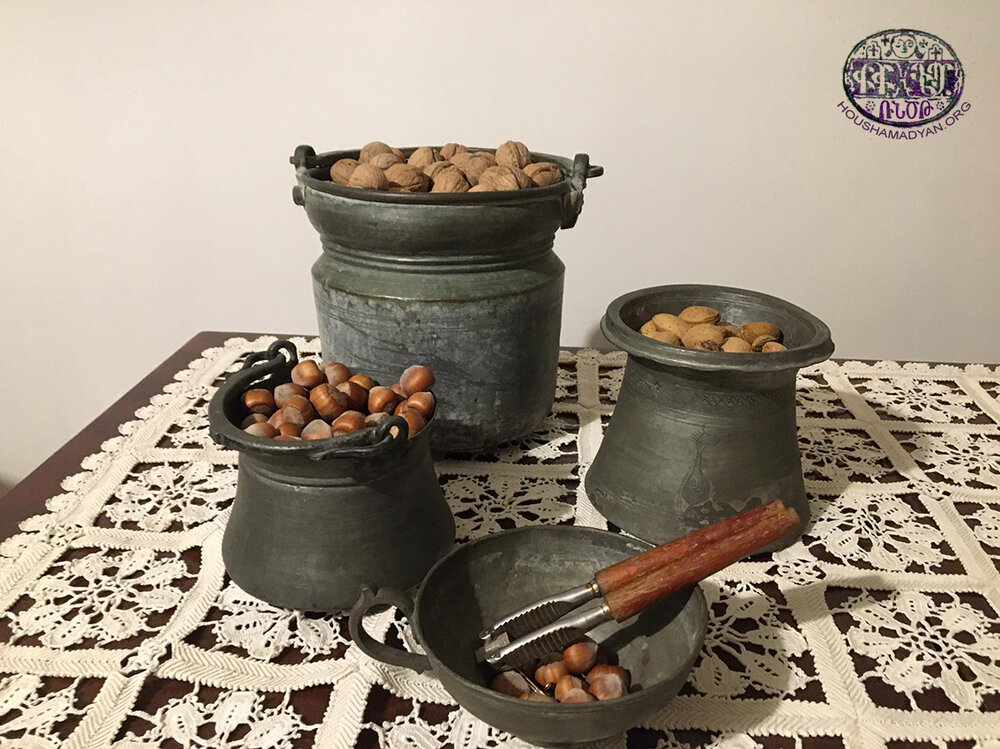
These items belonged to Dikranouhi (originally from Ayntab, born and died in Beirut, in 2014) and Hovhanness Der Khachadourian (born in Aleppo circa 1922, died in Beirut in 2014). Hovhanness' parents, Nartouhi and Khachadour, were from Malatya. This copperware first traveled from its land of origin to Aleppo, the first exile destination of the family that owned it. Then, it was taken to Beirut, where the family settled down in the early 1930s. The items have been passed on to Nara (Nartouhi) Ekizian, also a fellow descendant of Malatyatsi parents, who kept them for over a decade in Beirut and took them with her to Yerevan, Armenia, where she currently keeps them and gives them life by using them daily to store almonds, walnuts, and hazelnuts.
Thanks to its location right on the silk road, Malatya had always been a commercial hub. Among the local commercial products were cotton, opium, tobacco, hemp, rice, poppy seeds and poppy oil, fresh and dried fruits, dairy, honey, grape and mulberry molasses, fruit leather, arak, wine, etc. Malatya also exported lumber, furniture, wooden and clay tableware, ladles, textile, yazmas (headscarves), wool thread, red dye obtained from madder (Rubia) roots, carpets and rugs, sheep hide, silk cocoons, fabric, etc.
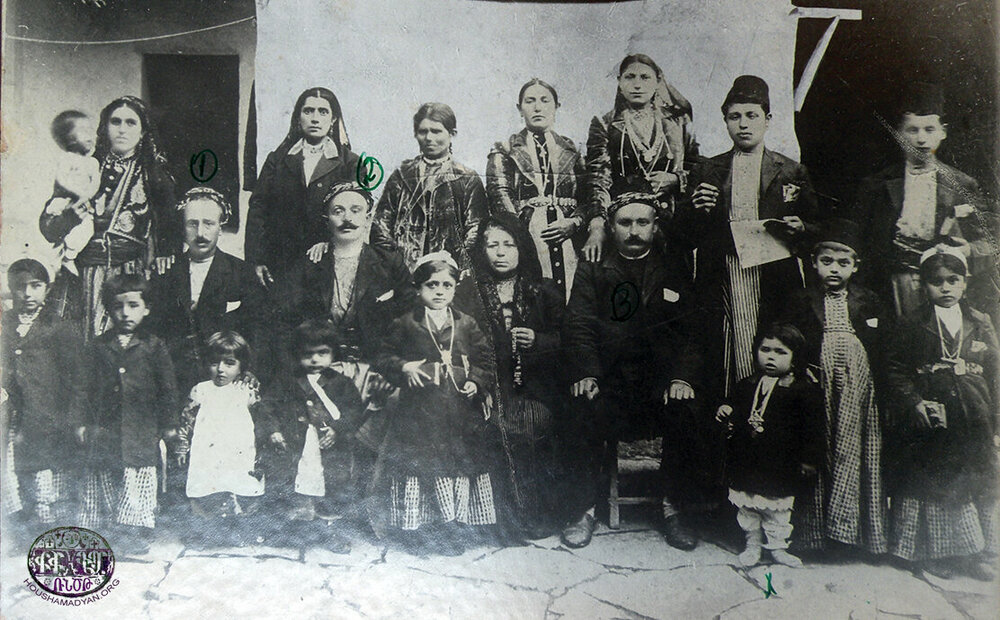
Seated, from left: Kerop Kalousdian, Kalousd Kalousdian, their mother (name unknown), Serop Kalousdian. Kerop, Kalousd and Serop are brothers. Front row (from right): Mari (later Uluhudjian), (unknown child), and Satenig (later Gulhandjian). The other children in the front row are Serop's and Kalousd's children (name unknown). Back row (from left): Pepron Kalousdian (Kerop's wife), the name of the child being held by Pepron is unknown, Khatoun (Kalousd's wife, nee Motian), an unknown woman, Margarit’s sister (name unknown), Margarit (Serop’s wife), Taniel (wearing a fez), Sarkis (wearing a fez) (Source: Roupen Kulhandjian collection, Beirut).
The kitchen utensils used by the locals were usually manufactured locally. From wood, craftsmen made plates, spoons, ladles, water containers, utensil holders, barrels, and jugs. From reeds and straws, they made baskets, hampers, straw mats, barrels, and kavalags (large baskets used to cover food). From fabric, they made bags and sacks; from clay, they made baskets, jugs, and plates; and from copper, they made knifes, pestles, pots, trays, and water containers.
In the late 1830s, the population of Hin [Old] Malatya was relocated to a nearby settlement, which became known as Nor [New] Malatya. The homes built here were larger, with walled courtyards, sometimes two-storied, with gardens or orchards adjacent to them. Some featured greenhouses, fountains, or spacious courtyards, where water often flowed out of a springhead and into a trough. Middle-class residents of Malatya lived in homes that had a single spacious room, which served simultaneously as the guest room, living room, bedroom, and kitchen.
Fruits occupied an important place in the diet of Malatya residents. Usually, most families consumed the harvest of their own gardens or orchards, and only bought fruits they did not grow from the market. Fruits were dried, both for the use of the household and to be sold. Some of each year’s harvest of fruit was made into shire, rechel, and bastegh (fruit leather). This allowed each family member to have his or her own supply of fruit for the winter.
Malatya residents had three meals per day, and cooked twice a day, for lunch and dinner. They called breakfast vanksnots, and lunch heorusnots.
Malatya cuisine was unique for its use of tirit. This broth was sometimes cooked with the juices of meats, and at other times with common water, with the addition of tomato and pepper pastes. Tirit was used as stock for various soups and other dishes. Another common ingredient in Malatya cuisine was nardan, the pulp of sour plums (cherry plums).
Grains and Bread
Wheat was the principal cereal in the diet of Malatya Armenians. It was preserved and processed in a variety of ways – as flour, ganduma (pounded/boiled chaffed wheat), gorgod (cracked wheat), bulgur, etc. Different types of bulgur included khorshouk (coarse bulgur), used for pilafs; dzudzig or kul (medium-sized bulgur), used for dolmas and soups; and put put, smndr (manr, small), and yarma (fine bulgur mixed with chaff), used for koftas.
The bread consumed on a daily basis was called pagharch. It was baked in round loaves with a thickness of one centimeter. Equally popular was losh (lavash), which consisted of thinner, more oval loaves. Dense bread was called taplama. Circular, flat loaves with a hollow center were called pultiks. Lounsgas were baked for children, and bligs were confectionaries that consisted of baked bread sweetened with molasses and with milk skin on top. Baksimat was a type of dry bread baked specially for travelers. After kneading dough for bread, the lady of the house would customarily make the sign of the cross while murmuring “Khach mer, ergink” [“Cross of ours, in the heavens”], then trace the sign of the cross into the dough. Then the dough would be wrapped up in a warm blanket and allowed to ferment. Bread was baked in the tonir, every Saturday during the summers and on a fortnightly basis in the winter. After being removed from the oven, the warm loaves would be arranged on a hatsdzvan (bread tray), wrapped, and stored in the pantry.
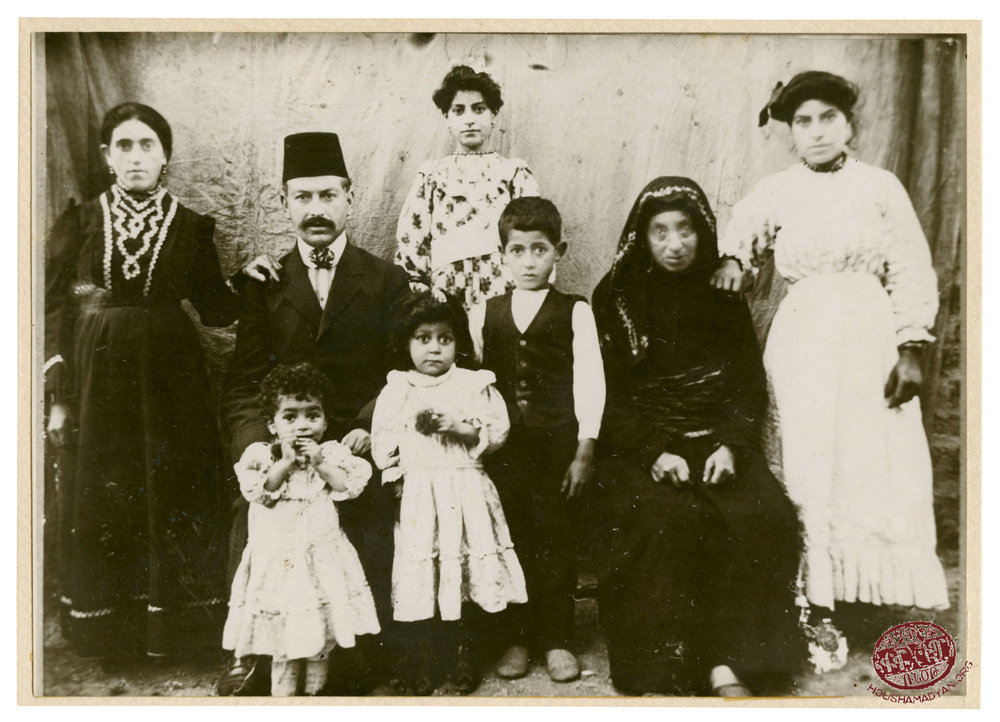
Salad
Green Salad
Purslane Salad
Purslane Djadegh (Djadjukh/Yogurt Dip or Sauce)
Paghla [Bean] Djadjegh
Boil the beans, then let them cool down. Add the boiled beans to yogurt diluted with water. Add garlic, fennels, oil, salt, and black pepper.
Djadjegh (Djadjekh/Madznaprtosh)
This was a salad consumed on a regular basis in the summer. It consisted of sliced cucumbers, garlic, and herbs mixed in yogurt.
Easter Djadjegh
This was a dish served on the evening of Holy Saturday. Boil beets, then drain. Add them to the yogurt, then add garlic.
Cucumber Salad
Slice the cucumbers, then mix with chopped fennels and crushed garlic. Add salt, pepper, vinegar, and oil.
Lettuce and Cucumber Salad
Lettuce Salad
Chop the lettuce, then add tatsan (tomato-pepper paste, nardan, oil, and seasoning).
Yaprakh Salad
Tomato Salad
Chop tomatoes and mint. Add salt, pepper, sumac, mint, and oil.
Skhdorchour [Garlic Water]
The Armenians of Malatya had a custom of chopping and crushing garlic, sprinkling it with salt, mixing it with some water, and then serving it with salt and pepper.
Omelets
On a daily basis, omelets were made by frying several eggs in hot oil without scrambling them.
Kourtounpourt or Bastegh Omelet
Ghavurma Omelet
100 grams of ghavurma meat, in its own oil
4 eggs
Red and black pepper
Salt
Fry the meat in its own oil, then add the beaten eggs and continue frying. Season before serving. Soudjoukh [sausage] omelet was prepared the same way, replacing the ghavourma meat with sausages.
Bread Omelet
Omelet with Honey
4 eggs
2 soupspoons of flour
1 soupspoon of oil
1 soupspoon of honey or molasses
Beat the eggs and flour, pour into a hot pan, then fry both sides thoroughly. Serve with honey or molasses on top.
Eggs with Tomatoes
2 tomatoes
1 bell pepper
4 eggs
1 soupspoon of oil
Red and black pepper
Parsley
Salt
Chop the tomatoes and pepper, then fry in the oil. Season, then crack the eggs on top. The dish can either be scrambled or not, according to preference.
Eggs with Parsley
Squash Chrtma
Usually, this dish was prepared the day after preparing dolma with summer squash, using the discarded innards of the squash.
2 summer squashes
1 onion
3 eggs
2 soupspoons of oil or olive oil
Greens
Red and black pepper
Salt
Chop the onions, mix with the squash, then fry in oil. Add the beaten eggs and continue frying. Serve with seasoning and chopped greens on top.
Shapalagh with Eggs
4 eggs
2 soupspoons of oil
For the dough:
1 cup of fine bulgur
½ cup of flour
½ cup of semolina
Red and black pepper
Cumin
Salt
Mix the ingredients of the dough, knead with water, and roll into small, round, and flat balls. Boil these in salt water, then place in a strainer and allow to cool down. Heat the oil, dip each doughball into the beaten eggs, then fry in the oil.
Pilafs
Pilafs were usually prepared using coarse-grained bulgur. Although rice was grown in Malatya, its use was not widespread. Rice pilafs appeared in the diets of wealthier families. Usually, pilafs were cooked with oil, and on Lenten days, with olive oil. They were also often cooked with bouillon.
Bulgur Pilaf
½ cup of vermicelli
2 cups of coarse bulgur
4½ cups of water
2 soupspoons of oil
Red pepper
Cumin
Salt
Simmer the vermicelli until red, then add the bulgur, water, and spices. Cook over a low flame until the water is completely absorbed.
Bulgur Pilaf with Tirit
2 tomatoes
1 bell pepper
2 onions
1 soupspoon of hot pepper paste
2 soupspoons of oil
2 cups of coarse bulgur
3 cups of water
Cumin
Red and black pepper
Salt
Chop the onions and pepper, then simmer in oil. Add the chopped tomatoes, paste, and spices, then continue cooking. Add the bulgur and cook over a low flame until the water is completely absorbed. During the winter, this dish was prepared with tirit.
Osbok (Lentil) Pilaf
2 cups of lentils
1 cup of coarse bulgur
3 onions
2 soupspoons of oil
4 cups of water
Red and black pepper
Cumin
Salt
Boil the lentils, add the bulgur and spices, then cook over a low flame. Chop the onions, simmer in oil, and pour on the pilaf. Continue cooking for a few minutes.
Smndre pilaf was prepared the same way, using a type of bulgur called smndr/simindur. First, boil the simindur, then add fried onions or oil.
To make erishde pilaf, first boil and drain erishde (home-made pasta), then simmer in oil.
Rice Pilaf
½ cups of vermicelli
2 cups of rice
4½ cups of water
2 soupspoons of oil
Salt
Simmer the vermicelli in oil until red. Mix in the rice, continue simmering for a few minutes, then add the water and cook over a low flame until the water is completely absorbed.
Rice Pilaf with Tirit
3 tomatoes
2 bell peppers
2 onions
2 soupspoons of oil
2 cups of rice
4 cups of water
Red and black pepper
Salt
Chop the onions and peppers, then simmer in oil. Add the chopped tomatoes and seasoning, then continue cooking. Mix in the rice and cook over a low flame until the water is completely absorbed. During the winters, this pilaf was prepared with tirit.
Chickpea and Rice Pilaf
1 cup of boiled chickpeas
2 cups of rice
4½ cups of water
2 soupspoons of oil
Baharat
Black pepper
Salt
Roast the rice in oil for a few minutes, then add the water and spices/seasoning. Boil, then add the chickpeas. Cook over a low flame until the water is completely absorbed.
Koftas (Gololags)
The Armenians of Malatya prepared a wide range of koftas. In the summer, when households prepared bulgur, they set aside the fine-grained, chaff-mixed bulgur (called simindur and yarma) for koftas. These included circular koftas (about the size of a walnut with the stuffing), balls (about the size of a chestnut), smaller balls (morsels rolled in the palm of a hand), and flat patties (circular and flattened). On holidays, koftas were prepared with meat tenderized on a stone called tagkar, using a special pestle. Usually, koftas were enjoyed with oil, sometimes also with fried onions and greens. All types of koftas were boiled in salt water.
Koftas were also made without meat, using a basic recipe. To avoid repetition, we will provide the recipe for the dough of meatless kofta only once and refer to it when necessary:
1 cup of fine bulgur
½ cup of flour
½ cup of semolina
Red and black pepper
Cumin
Salt
Khoshor (Big) Kofa
For the dough:
½ kg of ground meat
½ kg of fine bulgur
1 soupspoon of pepper paste
Red and black pepper
Cumin
Salt
For the stuffing:
½ kg of ground meat
2 onions
Baharat
Red and black pepper
Salt
Chop the onions for the stuffing, then fry with the oiled meat. Set aside to cool down. Mix the ingredients for the dough, knead with wet fingers, occasionally spraying the dough with water. Take small chunks from the dough, roll into balls with the fingers, then flatten them. Add the stuffing and roll the dough into walnut-sized koftas. Boil these in salt water. Oil is suggested as a condiment.
Glorig (Round) Kofta
These were prepared both with and without meat. They were cooked in tirit prepared with beef bouillon or in regular water.
Beef bouillon
2 cups of boiled chickpeas
2 soupspoons of tomato-pepper paste
Salt
For the meatballs:
½ kilogram of tenderized meat
½ cup of fine bulgur
1 soupspoon of pepper paste
Red and black pepper
Cumin
Salt
Knead the dough, then roll into balls the size of walnuts. Boil these in the tirit. When they begin rising to the surface, add the paste, chickpeas, and crushed garlic. Cook for another 15 minutes.
Chi Kofta
250 grams of unoiled ground beef
500 grams of fine bulgur
1 soupspoon of hot pepper paste
1 onion
Olive oil
Red and black pepper
Cumin
Salt
Scallions
Parsley
Chop the onions very fine, then add the other ingredients, wet the fingers, and knead at length. Then, wet the fingers with oil and roll the ingredients into small morsels. Serve with chopped herbs and parsley on top.
Ttvok (Sour) Kofta
Prepared with sour cabbage, on the first Monday of Lent.
½ kilogram of sour cabbage
2 onions
Olive oil
For the dough:
Meatless kofta dough (see the recipe above).
Chop the sour cabbages and boil in plenty of water. Mix the ingredients for the dough, knead with water, roll into balls, then add to the boiling cabbage. While the water boils, chop the onions, simmer in olive oil, then pour into the soup.
Khrdjigli Kofta
½ kilogram of cabbages
1 liter of yogurt
1 soupspoon of flour
3 onions
2 soupspoons of oil
Salt
For the dough:
Meatless kofta dough (see the recipe above).
Mix the ingredients for the dough, knead with water, then shape into morsels and boil in salt water. Chop the cabbages, boil partially in salt water, then drain. Beat the yogurt with flour, boil, add water, then cook the cabbages in the yogurt-water. Add the morsels of dough. Chop the onions, simmer in oil, then pour on top of the dish before serving.
Mchots Kofta
This was a dish enjoyed on mid-Lent. Unlike other koftas, mchots kofta was oval in shape. One of the koftas would contain a coin, and whoever got that kofta was considered to be blessed with good fortune.
For the stuffing:
4 onions
1 cup of chopped walnuts
Olive oil
Basil
Hot red pepper
Salt
For the relish:
½ cup of olive oil
2 soupspoons of hot pepper paste
For the dough:
Meatless kofta dough (see the recipe above).
Chop the onion for the stuffing, simmer in olive oil, add the walnuts, season, and put aside to cool down. Mix the ingredients for the dough, knead with water, and roll into walnut-sized balls. Boil in salt water. Heat the relish in olive oil and serve with the kofta.
Kofta of the Kurd
For the dough:
Meatless kofta dough (see the recipe above).
For the stuffing:
4 onions
1 cup of boiled lentils
Olive oil
Basil
Red hot pepper
Salt
Chop the onions for the stuffing, simmer in oil, then add the lentils and season. Put aside to cool down. Mix the ingredients for the dough, knead with water, then roll into walnut-sized koftas. Boil in salt water. Serve with nardan (pulp of sour plums - cherry plums).
Eggplant Kofta
3 eggplants
2 onions
2 soupspoons of tomato-pepper paste
Oil or olive oil
Red and black pepper
Salt
For the dough:
Meatless kofta dough (see the recipe above).
Mix the ingredients for the dough, knead with water, roll into balls, and boil in salt water. Fry the eggplants in rectangular pieces. Chop the onions and simmer in oil or olive oil, then add the paste. Dilute slightly with water and boil. Add the eggplants and the doughballs, continue boiling for 10 minutes and make sure the flavors mix, then serve. Suggested sides include fried onions and fried peppers. A similar dish can be prepared by using squash or cucumbers instead of the eggplants. In the summers, this dish was prepared with fresh tomatoes and peppers, and in the winter with tomato-pepper paste.
Osbov (Lentil) Kofta
2 cups of red lentils
1½ cup of fine bulgur
2 onions
2 soupspoons of oil or olive oil
1 soupspoon of tomato-pepper paste
Red and black pepper
Cumin
Salt
Scallions
Parsley
Lettuce
Boil the lentils in two cups of water. Add the bulgur after putting out the flame. Cover with the lid and set aside to cool down. Chop the onions, simmer in oil or olive oil, then add the paste and spices. Mix the onions and lentils, then knead. Also mix in the chopped scallions and parsley. Shape into small morsels with the fingers and serve on top of lettuce leaves.
Susurdzedz (Pounded Chickpeas)
Koftas and gololags prepared with crushed chickpeas were popular on New Year’s Day.
1 cup of boiled chickpeas
1 onion
1 clove of garlic
Olive oil
Parsley
Red and black pepper
Cumin
Salt
Chop the onions and garlic, and simmer in oil. Crush the boiled chickpeas while they’re hot, mix in the fried onions, the spices, and the chopped herbs. Shape into morsels and gololags.
Skhma Kofta
For the dough:
Meatless kofta dough (see the recipe above).
For the sauce:
Version 1:
1 liter of yogurt
2 cloves of garlic
2 onions
Olive oil
Salt
Version 2:
1 onion
2 tomatoes
2 bell peppers
1 clove of garlic
Parsley
Olive oil
Nardan (pulp of sour plums - cherry plums)
Red and black pepper
Salt
Mix the ingredients for the dough, knead with water, and then roll into small morsels (shaped in the palm). Boil these in salt water. Serve alongside the sauce. For version 1 of the sauce, mix the garlic into the yogurt and add fried onions. For version 2 of the sauce, simply chop the vegetables and add the spices.
Yogurt Kofta
For the dough:
Meatless kofta dough (see the recipe above).
1 liter of yogurt
2 cloves of garlic
2 soupspoons of oil
1 soupspoon of ground hot pepper
Salt
Mix the ingredients for the dough, knead with water, and roll into small balls. Boil these in salt water. Heat the oil, then add the hot pepper. Serve after pouring the mixture of yogurt and garlic over the doughballs, then adding the hot oil. The onions may also be fried with red pepper, according to preference.
Dolma Kofta (“Mother and Daughter”)
This semi-liquid dish was customarily prepared on holidays or for wedding festivities.
For the dough:
1 kilogram of tenderized meat
1 kilogram of fine bulgur
2 soupspoons of pepper paste
Red and black pepper
Cumin
Salt
For the stuffing:
250 grams of oiled, tenderized meat
1 onion
Baharat
Red and black pepper
Salt
For the broth:
2 soupspoons of tomato paste
2 soupspoons of pepper paste
3 soupspoons of oil
Red and black pepper
Basil
Chop the onions for the stuffing, fry with the oiled meat, then set aside to cool down. Mix the ingredients for the dough, knead with wet fingers, spraying the dough with water. Prepare three types of gololags: circular, stuffed ones; circular and flat ones; and small doughballs. Cook while mixing tomato-pepper paste into the broth.
Dolmas
The people of Malatya prepared two types of dolmas – yapragh (leaf dolma), prepared with cabbage, grape, bean, mulberry, or violet leaves; and kulah litsk, which was prepared with eggplants, peppers, Armenian cucumbers, summer squashes, or cantaloupes. When they made dolmas with meat, locals used oiled mutton and usually bulgur. Rarely, dolmas were made with rice. Meat dolma with rice was called lahana printsok. As for dolma wrapped in the leaves of sour cabbages, it was called lahana ttvok.
Paf Yapragh
2 cups of medium-sized bulgur
4 onions
Oil
Nardan (pulp of sour plums - cherry plums)
Red and black pepper
Basil
Salt
Preserved grape leaves
Chop the onions, simmer in oil, then add the remaining ingredients and roll in the grape leaves. Arrange the dolmas in a pot. Add enough water to cover the dolmas, securing them in place by placing a heavy tray on top. Cook until the water is completely absorbed.
Common Yapgragh
½ kilogram of ground, oiled meat
2 cups of medium-sized bulgur
2 onions
Fresh parsley
Red and black pepper
Sumac
Caraway
Salt
Half-boiled cabbage leaves
Fresh mint
Cloves of garlic
Chop the onions and the herbs, add the remaining ingredients, and roll in cabbage leaves. Arrange the dolmas in a pot and fill the gaps with cloves of garlic and leaves of mint. Add enough water to cover the dolmas, securing them in place by placing a heavy tray on top. Cook until the water is completely absorbed.
Mandur [Small] Yapragh
2 cups of medium-sized bulgur or rice
4 onions
4 cloves of garlic
Herbs
Oil
Sour grapes
Red and black pepper
Cumin
Mint
Salt
Preserved grape leaves
Chop the onions, garlic, and the herbs. Add the rest of the ingredients and roll in square grape leaves. Arrange the dolmas in a pot. Add enough water to cover the dolmas, securing them in place by placing a heavy tray on top. Cook until the water is completely absorbed. Serve with fried onions and garlic-yogurt.
Soud [False] Dolma with Rice
2 cups of rice
½ cup of raisins
½ cup of barberries
½ cup of pine seeds
4 onions
Oil
Greens
Red and black pepper
Baharat
Salt
Preserved or half-boiled grape leaves or cabbage leaves
Chop the onions and simmer in oil. Mix it with the rest of the ingredients and roll in the leaves. Arrange the dolmas in a pot. Add enough water to cover the dolmas, securing them in place by placing a heavy tray on top. Cook until the water is completely absorbed.
Lovgi (Bean) Leaf
2 cups of fine-grained bulgur
Red and black pepper
Salt
Bean leaves
1 liter of yogurt
1 teaspoon of flour
2 cloves of garlic
4 onions
Oil or olive oil
Nardan (pulp of sour plums - cherry plums)
Salt
Season the bulgur and roll it into small dolmas in the leaves. Arrange the dolmas in a pot. Add enough water to cover the dolmas, securing them in place by placing a heavy tray on top. Cook until the water is completely absorbed. Beat the yogurt with the flour, boil, then add the crushed garlic. Pour this mixture on top of the dolmas, then continue cooking. Chop the onions and simmer in oil or olive oil. Pour water over the dolmas, as well as the fried onions and nardan, and serve with onions, radish, and greens on the side.
Quince Dolma with Rice
This dish was usually prepared for visits by prospective in-laws.
10 medium-sized quinces
½ kilogram of oiled, tenderized meat
½ cup of rice
2 onions
Nardan (pulp of sour plums - cherry plums)
Red and black pepper
Salt
Chop the onions, then mix it with the meat, rice, and spices. Hollow out the quinces, fill with the stuffing, arrange in a tray, fill the pot halfway up with water, cover, and cook over a low flame.

Soups
Perperabour
This dish, also called gdjakhash, was traditionally served on New Year’s Day. It was prepared by filling a pot with a variety of cereals that the household anticipated growing in the spring. The dish was cooked all night long over a low flame. In the summers, locals collected and dried purslane and set it aside to make this dish in the winter.
½ cup of boiled beans
½ cup of boiled chickpeas
½ cup of boiled lentils
½ cup of boiled dzedzadz (pounded wheat)
4 onions
1 head of garlic
1/3 cup of oil
1/3 cup of tomato paste
½ kilogram of purslane
Red and black pepper
Cumin
Salt
Boil the cereals and purslane in plenty of water. Chop the onions and garlic, simmer in oil, add the tomato paste and spices, then pour into the soup. Continue boiling over a low flame.
Putput
1 cup of fine-grained bulgur
2 teaspoons of tomato paste
2 teaspoons of flour
1 teaspoon of oil
2 onions
Red and black pepper
Dried basil
Salt
Chop the onions and simmer in oil. Add the tomato paste and spices, then continue cooking for a little while. Boil the bulgur with 3 cups of water. Thicken the flour with one cup of water, pour over the soup, then boil all the ingredients together.
Lahana [Cabbage] with Bulgur
½ kilogram of cabbages
2 onions
½ cup of coarse bulgur
1 soupspoon of tomato paste
1 soupspoon of pepper paste
2 soupspoons of oil or olive oil
Red and black pepper
Fresh parsley
Salt
Chop the onions and simmer in oil. Add the chopped cabbages and continue frying. Add the paste, 2 cups of water, spices, and continue cooking. Then add the bulgur and chopped parsley and continue cooking over a low flame until the bulgur is completely cooked.
Ganduma (Dzedzadz) Soup
1 cup of dzedzadz
1 cup of large chickpeas or beans
1 soupspoon of tomato paste
1 soupspoon of pepper paste
2 onions
3 cloves of garlic
Olive oil
Red and black pepper
Dried basil
Salt
Boil the dzedzadz in plenty of water. Meanwhile, chop and fry the onions and garlic, and add the pastes and spices. Add the fried onions to the soup, as well as the boiled chickpeas or beans. Cook for another 15 minutes.
Lovig (Bean) Soup
This soup was prepared at the end of autumn, when the buds of the beans appeared on the stalks. These unripe beans were cooked alongside green beans. The same soup was prepared in the winter with dried green beans and tirit.
1 cup of boiled beans
300 grams of green beans
2 tomatoes
2 bell peppers
2 onions
3 cloves of garlic
Fresh parsley
Red and black pepper
Dried basil
Olive oil
Salt
Chop the onions and simmer in oil. Then add the chopped green beans and simmer together. Add the chopped tomatoes, peppers, and spices, then continue cooking. Add water and beans constantly. Before putting out the flame, add the crushed garlic and chopped parsley.
On holidays, lovig soup was prepared with ghavourma meat, tirit, and beans.
Maznok (Yogurt) Shorva
1 liter of yogurt
1 soupspoon of flour
1 cup of dzedzadz
1 soupspoon of oil
Salt
Boil the dzedzadz in plenty of water. Beat the yogurt with flour, then slowly pour into the boiling water while constantly stirring. Add oil before serving.
Tsanoug or Boldik [Tomato] Soup
1 cup of rice
3 tomatoes
1 pepper
1 onion
2 soupspoons of oil or olive oil
Fresh parsley
Red and black pepper
Dry basil
Oil
Water
Salt
Chop the tomatoes and pepper, season with salt, and boil. Chop the onion and simmer in oil or olive oil. Add the fried onion to the tomato and pepper, then add the rice and spices. Cook over a low flame. Add water as needed until the rice is pureed. Sprinkle chopped greens on top before serving.
Lapa with Rice
1 cup of ground rice
5 cups of water
2 soupspoons of flour
2 soupspoons of oil
Salt
Boil the rice with four cups of water, then thicken the flour with one cup of water and add to the boiling stew. When the soup is ready, add the oil and serve.
Gorgod soup was prepared the same way, using gorgod (cracked wheat) instead of rice.
Several similar dishes that were prepared with milk. For example, lantag was prepared by cooking flour in milk. Milk soup was prepared with rice and milk. Palouza was a soup usually eaten by children, prepared with farina and milk.
Osbok (Lentil) Soup
1 cup of lentils
½ cup of rice
2 onions
1 soupspoon of oil or olive oil
Red and black pepper
Salt
Greens
Boil the lentils in plenty of water, add the rice, and continue cooking. Chop the onions, simmer in oil, mix into the soup, add the spices, and boil for a few minutes.
Khorshouksoup was prepared the same way, using coarse-grained bulgur instead of lentils.
Savlorok (Plum) Soup
1 cup of boiled chickpeas
1 cup of small, dried plums
2 onions
1 soupspoon of oil
1 potato
1 soupspoon of flour
Greens
Red and black pepper
Salt
Fry the onions, then add water, the chickpeas, the dried plums, the chopped potato, and the spices. Cook until the vegetables soften. Thicken the flour with a small amount of water, add it to the soup, and boil. Before putting out the flame, mix in the chopped greens.
Chrvra (Water) with Eggs
2 soupspoons of flour
1 soupspoon of oil
4 cups of water
4 eggs
Red and black pepper
Salt
Heat the oil, add the flour, and simmer together. Then add water and boil. Beat the eggs with salt and pour slowly into the boiling soup. Season and stir. Crumble dry bread into the soup and serve.
Soungabour (Mushroom Soup)
½ kilogram of mushrooms
1 onion
1 carrot
1 potato
½ cup of rice
1 soupspoon of tomato paste
1 soupspoon of oil
Greens
Red and black pepper
Salt
Chop the vegetables and boil them together. Add the rice and continue boiling. Add the oil and paste, season, and cook for another 15 minutes. Add the chopped greens before putting out the flame.
Sokhabour (Onion Soup)
1 kilogram of small onions
1 soupspoon of tomato paste
1 soupspoon of pepper paste
2 soupspoons of oil
2 eggs
2 soupspoons of flour
Red and black pepper
Cumin
Herbs
Fry the onions in oil, then add the water, the spices, and paste, and cook together. Beat the eggs, add the flour, and continue to beat, occasionally adding some of the soup’s juices to thicken it. Then add this mixture to the soup, boil a while longer, and add the chopped greens.
Leek soup was prepared the same way.
Heyva (Quince) Soup
½ kilogram of quinces
1 coffee cup of coarse bulgur
2 onions
2 soupspoons of oil
1 soupspoon of tomato paste
1 soupspoon of pepper paste
Red and black pepper
Greens
Salt
Add the pastes and spices to the fried onions, add water, and boil. Add the chopped quinces and bulgur and continue cooking. Add the chopped greens before serving.
Prshoung
1 cup of rice or bulgur flakes
2 onions
1 soupspoon of oil
1 soupspoon of tomato paste
Greens
Red and black pepper
Salt
Boil the flakes in plenty of water. Chop the onions and simmer in oil. Add the onions to the soup, then add the paste and spices. Add the chopped greens after putting out the flame.
Kelle
Kelle (khash) was usually prepared the day after preparing ghavourma. While some of the household continued the process of storing and preserving the ghavourma, the young boys were given the sheep’s head and hoofs and instructed to take them to the blacksmith, so that they could be roasted in the strong fire. On the way to the blacksmith and on the way back, the boys would chant “Kelle pacha, gir ou hacha…” [“Head, hooves, eat and bark…”] In the evening, the lady of the house would prepare a pot holding a large amount of water, in which the head and the hooves would be boiled over a low fire throughout the night. The next morning, the entire family would gather around the kitchen table and eat the pacha while also dipping lavash bread into it.
Meals
Yahni
1 kilogram of oiled and bony meat
4 onions
2 tomatoes
2 peppers
1 head of garlic
Red and black pepper
Cumin
Salt
Chop the meat and boil it. Add the chopped vegetables and spices/seasoning, then continue to cook over a low flame. Serve with bulgur pilaf or rice pilaf.
Meat Baldjan (Eggplants)
500 grams of oiled meat
1 kilogram of eggplants
½ kilogram of tomatoes
4 bell peppers
3 onions
1 head of garlic
Red and black pepper
Cumin
Salt
Boil the meat in a small amount of water, then mix in the chopped vegetables, season, and continue cooking over a low flame. Serve with bulgur pilaf or rice pilaf.
Moussaka
Bamia (Okra)
300 grams of oiled and bony meat
1 kilogram of okras
2 soupspoons of tomato-pepper paste
Nardan (pulp of sour plums - cherry plums)
Red and black pepper
Salt
Boil the meat, add the spices and paste, then add the okra. Cook until the okra is no longer raw but do not allow it to soften. Serve with bulgur pilaf or rice pilaf.
Boumbar
Boumbar was prepared after making ghavourma and preserving it for storage, using the intestines of the animal. First, the intestines were cleaned with ash water and vinegar. Then they were filled with ground, oiled meat and cracked wheat, alongside a generous amount of seasoning. The intestines were tied off occasionally, and the resulting sausages arranged in a pot. Then they were cooked with salt, black pepper, and bay leaves.
Gabourgha
Gabourgha or porlits was prepared by slicing the flank of a sheep, filling the torso with boiled rice, sewing the slit shut, then roasting the sheep in an oven over a low flame. The juices were continually collected and poured back on top of the meat. The sheep’s position was occasionally shifted so that it was cooked evenly.
Boughlama
½ kilogram of winter squash
100 grams of green beans
2 onions
2 bell peppers
2 tomatoes
1 head of garlic
2 soupspoons of oil
Herbs
Nardan (pulp of sour plums - cherry plums)
Red and black pepper
Salt
Chop the vegetables, add the spices, and arrange in the pan. Simmer in their own juices. Add oil, nardan, and chopped greens, then serve.
Some of the simple, but nutritious meals that Malatya Armenians prepared on a regular basis included:
Khaviz/khavidz, usually prepared for a pregnant woman. Roast flour in oil, slowly add boiled water, and mix. A similar semi-liquid dish was tsdzig, which was prepared by roasting bulgur in oil, then adding water. Khashil was prepared by cooking kama in water or milk, and was served after pouring oil in the center. Pantag was prepared by mixing flour or farina in molasses, and served after pouring oil in the center. Tourkhana/tarkhana was a soup made by wetting previously preserved tarhana, then cooking it in plenty of water alongside fried onions. On holidays, ghavourma meat was also added to the fried onions. On Holy Wednesday, people enjoyed andjour (oil-less) tarkhana, which was spicy and sour, and prepared without oil.
Geobelegwas the name given to mushrooms that grew on the lower portions of tree logs. These were enjoyed fried.
Keshkeg
Keshkeg was the name given to the harissa prepared on Maundy Thursday.
1 cup of dzedzadz
1 cup of chickpeas
½ kilogram of greens
2 onions
1/3 cup of olive oil
Red pepper
Cumin
Salt
Boil the dzedzadz and chickpeas together, add the chopped greens, and continue cooking, stirring occasionally. Serve with fried onions, seasoned with cumin and hot red pepper.
Harissa was cooked by boiling pounded wheat with rooster’s meat. On holidays, it was prepared with the meat of the sacrificial lamb and enjoyed with kharkhz on top (kharkhz was the name given to the flakes of oil that resulted from frying diced sheep’s lard).
Chop (Twig) Kebab
This kebab was prepared by cooking meat and vegetables skewered on clean rose hip branches.
Square-diced mutton
Onions
Peppers
Tomatoes
Eggplants
Oil
Nardan (pulp of sour plums - cherry plums)
Red and black pepper
Savory
Salt
Choose small onions, small tomatoes, and thin eggplants and peppers. Chop the eggplants and peppers into pieces the size of the meat. Marinate the meat an hour in advance. Arrange the meat and vegetables on the skewers. After heating the oil in the frying pan, set the skewers and cook both sides. Cover the pan and allow it to continue cooking over a low flame. Serve with chopped greens and onions on top. Nardan is also suggested as a side.
Desserts
Havle (Halva) with Flour
1 cup of flour
2 soupspoons of oil
1/3 cup of molasses
Roast the flour in oil until it turns gold. Put out the flame, then slowly add the molasses, stirring constantly. Add chopped walnuts, if desired. Using two spoons, shape the halva into oval-shaped morsels.
Havle (Halve) with Nisha [Farina]
1 cup of farina
1 cup of water
1 soupspoon of oil
1/3 cup of molasses
Dissolve the farina and molasses in water. Heat the oil, pour the mixture in it, and cook while constantly stirring until the mixture starts curdling.
Havle (Halve) with Cheese
50 grams of butter
1 cup of flour
½ cup of sugar
½ cup of water
100 grams of unsalted, white cheese
Powdered cinnamon or cardamom, if desired
Mix the sugar into the water and boil. Roast the flour in butter, then add stringed cheese, stirring constantly, until the liquid becomes homogeneous. Slowly add the sugar water, continuing to stir. Flatten out in a plate or roll into small balls. Add spices according to preference.
Khalbour or Magh Khourma
Khalbour means fake, and khourma means dates. This implies that this was a dish made with “fake” dates. As for magh, it got this name because it was prepared using a strainer.
1 cup of yogurt
2 eggs
1 teaspoon of baking soda
2½ -3 cups of flour
Salt
Olive oil, to fry
Sugar water
Mix the ingredients of the dough and knead, keeping it soft. Set aside to rest for half an hour. Taking chunks from this dough, roll them into balls, then use the fingers to stretch them onto a strainer. Take these patties and fry them in hot oil, then place them in a strainer again to drain the oil. Afterwards, soak them in sugar water for a few minutes, then place them on another strainer.
Khoshaf
On the eve of holidays, the Armenians of Malatya would soak seven types of dried fruits in boiling water. Some would also add nuts, and, according to preference, would sprinkle the dried fruits with cinnamon. These were then served as desserts alongside tea. But sometimes, they were also served as a meal, alongside rice pilaf or bulgur pilaf.
Boereg
1½-2 cups of flour
½ cup of oil
½ cup of water
1 teaspoon of baking soda
1 soupspoon of vinegar
Salt
1 egg, to rub on top
Unsalted cheese, for the stuffing
Powdered sugar, to sprinkle on top
Mix the ingredients and knead. Cover and allow it to rest and ferment for half an hour. Roll into walnut-sized balls, open these up with the fingers, fill with cheese, then press them shut again. Arrange these on a tray, coat the surface with raw egg, and bake. Sprinkle sugar on top after cooking.
Gadayef
Knead strings of dough with butter. Using half of the dough, cover the bottom of the pan. Pour chopped walnuts and powdered cinnamon on top. Use the rest of the dough as a top layer, using the palms to flatten it. Bake in low temperature, until it turns pink. After taking it out of the oven, immediately douse with previously prepared sugar water.
Gatmer
1-1½ cups of flour
1 cup of water
1 egg
1 soupspoon of vinegar
A pinch of salt
Oil to rub in the gaps
Honey water or molasses to pour on top
Mix the ingredients for the dough, knead, cover, and set aside for half an hour to allow it to ferment. Roll the dough out in a thin layer, fold it over itself, then bake in a pan (or on a saj). Cut into pieces, pour honey or molasses on top, and serve while hot.
Kata
Decorated katas were baked by brides’ families for their new in-laws to celebrate marriages.
½ cup of oil or milk skin
½ cup of yogurt
1 teaspoon of baking soda
1½-2 cups of flour
Salt
1 egg to rub on top
Honey water
Mix all the ingredients together and knead, then cover and allow it to rest for half an hour. Split into three portions, roll each into a ball, roll it out flat, then decorate with a special mold made for katas (or with a fork). Coat the surface with an egg and bake. After removing it from the oven, pour honey water on top.
Pokhnit
1 cup of pokhints [kama] *
50 grams of butter
¼ cup of molasses
Mix the pokhints and the molasses, then add the butter. Roll into small morsels and serve.
* To make the pokhints, roast cracked wheat, allow it to cool dowm, then grind into a powder.
Paklava (Baklava)
For the dough:
1-1½ cups of flour
1 cup of water
1 egg
1 teaspoon of vinegar
A pinch of salt
For the stuffing:
Chopped walnuts
Powdered cinnamon
1 egg, to rub on top
Oil, to coat the dough
Honey water
Mix the ingredients for the dough and knead. Roll into walnut-sized balls, then set aside and cover for half an hour to allow the dough to ferment. Roll the balls of dough out with a rolling pin, rub with oil, fold, rub with oil again, adding the stuffing between the layers. Shape the dough into triangles or any other desired shape. Arrange on the baking pan, coat with raw egg, and bake until the dough turns gold. Upon removal from the oven, douse with the honey water, and allow the dough to absorb it for an entire day and to soften.
Palouza
Preserves
As in other areas of Ottoman Armenia, the primary method of preserving food in Malatya was to dry it in the sun. The process was called arkgel (arekagel = to expose to sunlight, to desiccate). Locals used a variety of thick sheets, or hassvans, for this process.
Nishe (farina) was made by threshing, drying, and then grinding chaffless wheat.
Tourkhana/tarkhana was prepared in the summers. A small amount of flour was mixed into yogurt, and the yogurt was boiled. Cracked wheat, powdered mint, and salt were added, and the wheat was allowed to completely absorb the yogurt. The liquid was poured into large vats, then dried in the sun. The dried paste was cut into pieces and stored in cloth sacks. Chre Tarkhana was prepared for Lent, without the yogurt, wetting the cracked wheat in boiled water, then cutting the resulting paste into balls and drying them in the sun.
Mulberrymolasses: fill a cloth sack with mulberries and press. Boil the juice, strain again, and pour the resulting liquid into a cotton sack. Then pour this juice into chamber pots and place these on the roof, where the liquid will evaporate.
Basdegh (Fruit Leather): boil mulberries, then strain into a special bag. Mix flour or farina into this liquid, then boil again and turn it into malez. Take this malez to the roof and spread it on a blanket. Sprinkle it with poppy seeds or apricot seeds. On the next day, take the paste and rest it on ropes for a few hours. Cut into chunks of about 30 x 30 centimeters in size, sprinkle a bit of flour on top, so that the chunks don’t stick together, fold together, and store in tin cans or clay jugs. Keopug basdegh was basdeghprepared with grapes or plums.
Kesmedje (Hadaplit): add flour to boiled fruit juice. Boil together, then pour about 1 centimeter of it into copper plates. Set it aside to dry. The next day, cut itinto pieces, then spread on a blanket placed on the roof. Sprinkle with flour. Dry for several days. Store in boxes, sprinkling flour on top. Serve as a dessert, or with fried eggs.
Rechel: prepared with dried plums, grapes, apricots, or summer squashes, first by boiling them in mulberry shire. The must was then left in the searing sun to dry and thicken.
Dried fruits: fruits were cut in half, and their pits and seeds removed. Then they were spread on a mat, under the sun. Herbs were dried in the shade, and vegetables were dried after sprinkling them with salt and arranging them on mats and straw mats, and some by hanging them from ropes. This was the method used to dry tomatoes, peppers, beans, okra, eggplants, Armenians cucumbers, summer squash, etc.
Raisins: bunches of grapes were first dipped into ash water, then hung from strings and allowed to dry.
Wine: wine was prepared using red and white grapes. Malatya’s wine was sweet and unadulterated.
Arakhi (arak): this was the name given to common grape liquor. Perverde was the name given to fruit liquor, which was made with virtually all fruits. Each home had its distillery, which was called the umgeg.
Nardan: sour, unripe plums were boiled, then strained, then dried under the sun, resulting in a sour sauce that was used to prepare a variety of foods.
Sour grapes: unripe grapes were crushed, then drained and strained. The juice was boiled, salt was added, and the liquid stored in bottles.
Oil: butter was obtained by churning yogurt. This butter was preserved in a salty medium, until enough of it was collected. Then, it was placed over a low flame, which resulted in the milk separating from the oil.
Chortan: the tan (doogh) from the churn was boiled then strained. Flour and salt were added, and the mixture was rolled into small balls and dried in the sun.
Jahra/Shahrie/vermicelli: dough was kneaded with flour, water, and salt until it was tight. Traditionally, female acquaintances and neighbors were invited to participate in the process. By rubbing the dough between the thumbs and the index fingers, it was shaped into noodles the size of barley seeds. These were then dusted with flour, so that they wouldn’t stick to each other, then baked in a hot oven until red. Jahra was stored in cloth sacks.
Ereshde: dough was kneaded with flour, water, and salt until it was tight. Then, it was rolled open with a rolling pin, cut into thin strips, and dusted with flour so that the strips wouldn’t stick to each other. The dough was then baked and dried in an oven until it turned red. Ereshde was stored in cloth sacks.
Sources
- Arshag Alboyadjian, Badmoutyun Malatyo Hayots: Deghakragan, Badmagan yev Azkakragan [History of Malatya Armenians: Geographic, Historic and Ethnographic], Beirut, Sevan Press, 1961, 1,536 pages.
Oral testimonies:
- Stepan Galloshian: a master woodcarver by profession, just like this father. He was born in the city of Malatya, in Turkey. After completing his military service, at the age of 21, he moved to Constantinople, where he married Eugenie Donabedian. Eugenie’s ancestors hailed from Arapgir, but her parents lived in Malatya. In 1980, the Galloshian family immigrated to Armenia via Aleppo. They still live in Armenia.
- Hripsime Vorperian: born in Yerevan, she is the daughter of Khosrov Vorperian and Siranoush Momdjian, who were born in Malatya but immigrated to Armenia.
- Eliza Vorperian: born in Yerevan, with roots in Malatya. She is Hripsime Vorperian’s niece (brother’s daughter).
- Hasmig Asdvadzadrian: born in Yerevan, with roots in Malatya. She is Hripsime Vorperian’s daughter.
- Nartouhi Ekizian: born in Yerevan, with roots in Malatya.
- Michel Ozisman (Moushegh Shishmanian): born in Malatya. At a young age, his family moved to Constantinople, then to Paris. Once Armenia gained its independence, he moved to Armenia, started a family, and still lives there today. By profession, he is a senior cook.
